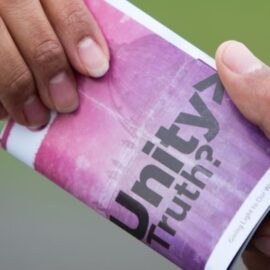

This article is an excerpt from the Shortform book guide to "His Very Best" by Jonathan Alter. Shortform has the world's best summaries and analyses of books you should be reading.
Like this article? Sign up for a free trial here.
What were Jimmy Carter’s foreign policy successes? What personal principles undergirded his global approach?
On the global stage, Jimmy Carter distinguished himself as a president who would eschew the use of military strength except as a last resort. Instead, he prioritized maintaining and promoting peace at any cost, including political damage to himself.
Read more to learn about the key successes and failures of Jimmy Carter’s foreign policy.
Jimmy Carter’s Foreign Policy
While Jimmy Carter’s foreign policy brought about dramatic successes such as averting a military crisis in the Panama Canal and negotiating a lasting peace between Israel and Egypt, his legacy was ultimately marred by his response to the Iranian Revolution and the subsequent hostage crisis. Jonathan Alter discusses these events of the Carter presidency in his biography His Very Best.
The Panama Canal
Alter writes that Carter was determined to do the right thing regardless of the political consequences. A prime example of this was giving Panama control of the Panama Canal, which by treaty belonged to the US forever. Perpetual American control of the canal bred anti-US resentment in Panama and neighboring countries that threatened to erupt into violence. Had it done so, the US would have been forced to defend the canal and all the traffic through it in a conflict that might have eclipsed the Vietnam War in scope and duration. Presidents Johnson, Nixon, and Ford had all broached the topic of transferring ownership of the canal to Panama, but it had been blocked by fierce congressional opposition.
Carter’s fellow politicians considered any attempt to give away the canal to be tantamount to political suicide, but Alter says that Carter viewed indefinite US control to be morally unjust to the Panamanian people. Carter hashed out a new deal with Panama, and to get it ratified by the Senate, he framed it as two separate treaties—one ensuring that the canal would remain open and neutral, and another handing over control of the canal to Panama in 1999. The neutrality treaty passed by one vote, and Carter spent a lot of political capital to make sure the handover treaty passed as well. Though giving away the canal proved unpopular in the US, it protected a vital global trade route and kept the US out of another costly war.
| Short-Term Pain and Long-Term Gain Though there were strategic and economic arguments for retaining control of the Panama Canal, the US’s reluctance to relinquish power was also a matter of national pride. In the aftermath of the US withdrawal from Vietnam, many Americans felt that pulling out of Panama was a similar blow to their national pride, one which Carter’s opponents painted as a sign of America’s decline on the global stage. Nevertheless, declassified documents from the ’60s and ’70s reveal rising tensions between Panamanian and US officials over the treatment of Panamanians in the Canal Zone and a rising perception of US colonialism that led to violent demonstrations. Despite Carter’s difficulties in arranging the transfer, his treaties were never challenged afterward, even during the US’s 1989 invasion of Panama to oust the dictator Manuel Noriega. The final canal handover in 1999 resulted in Panama’s rapid economic growth, which is four times higher than that of its neighbors. Meanwhile, the loss of American governance hasn’t harmed the US economy—instead, a 2016 expansion to the canal has created US jobs, lowered shipping costs, and relieved congestion at US ports. |
The Camp David Accords
Another conflict where Carter felt compelled to intervene was that between Israel and its Arab neighbors. Though open fighting halted in 1973, Egypt and Israel were still technically at war, and thousands of Palestinians lived in refugee camps. Carter valued Israel because of his religious convictions, but Alter says Carter sympathized with the Palestinians, whom he felt were enduring the same conditions that his Black neighbors had during segregation. He reached out to Middle Eastern leaders in the hopes of brokering a lasting peace and connected strongly with Egyptian President Anwar Sadat. Carter hosted talks between Sadat and Israel’s prime minister Menachem Begin at Camp David, the presidential retreat outside Washington.
Over two weeks of intense negotiations, Carter mediated between the two leaders, doing everything he could to produce an agreement. Alter explains that, just as with Panama, Carter arrived at a two-treaty solution—one to ensure Israel’s withdrawal from Egypt’s Sinai Peninsula and one to restrict Israel’s presence in the West Bank while talks continued toward Palestinian independence. While the latter never came to fruition, the peace between Egypt and Israel has held since the Camp David Accords were accepted.
| Middle East Peace and US Interests One might question why the US (under Carter or any other president) should act as an intermediary in foreign conflicts. In Battlegrounds, Gen. H.R. McMaster argues that especially in the Middle East, regional violence and instability have a tendency to spread elsewhere in the world. Whereas Israel has been an ally of the US since its establishment in 1948, McMaster suggests that secular governments such as Egypt’s in the 1970s were a boon to the US’s security interests because they helped keep radical religious extremists in check. A point of common ground between Begin, Carter, and Sadat that Alter hints at but doesn’t explore is their shared anti-Soviet animosity. Sadat viewed the USSR as a colonialist power and cut ties with the Soviets upon becoming Egypt’s president, while Begin was well aware of the Soviet Union’s oppression of Russian Jews. After Carter, Sadat, and Begin reached a peace agreement, the Soviet Union came out in vocal opposition to it, in part to stoke fears about US influence among its Arab allies and in part because the Camp David Accords had served to undermine the USSR’s importance in the Middle East. |
The Iran Hostage Crisis
While Carter was achieving a measure of success negotiating peace between Israel and Egypt, the political situation in Iran was deteriorating faster than anyone in the US realized. The Iranian Revolution and the 444-day hostage crisis that followed would become for many people the defining historical event of Carter’s presidency, completely dominating his last year in office. Alter details the road to the crisis, Carter’s resistance to using military force, and the final push to free the hostages just as Carter’s presidency came to its end.
Alter argues that there was nothing Carter could have done to prevent the Shah’s downfall or Khomeini’s rise to power, but he notes that Carter was taken aback by the strength of anti-US sentiment in Iran. Giving in to his humanitarian values, Carter granted the Shah temporary medical asylum. The Iranian response was stronger than anyone expected.
Islamist groups within Iran believed the Shah’s presence in the US was part of a scheme to return the Shah to power. On November 4, 1979, under Khomeini’s direct approval, Iranian students stormed the US embassy in Tehran looking for evidence of a plot against Iran, taking the staff as prisoners in what was meant to be a short occupation. A rescue was unfeasible since Tehran was so far from US military forces. More than that, Carter feared that any attack would result in hostage deaths while dragging the US into another war. Carter placed sanctions on Iranian oil, froze Iranian bank accounts within the US, and made one attempt at a military rescue that failed because of the US military’s inability to coordinate between branches.
Once it was clear that Carter wasn’t going to retaliate, Khomeini knew he could hold the hostages indefinitely. At home, the hostage crisis brought the American people together while painting Carter as an ineffective leader.
Carter devoted nearly all his focus to resolving the hostage situation, attempting to negotiate through other countries as intermediaries instead of campaigning hard for reelection. Even the Shah’s death in June 1980 didn’t bring about the hostages’ release. Instead, Alter suggests that two other factors caused Khomeini to finally relent. One was Iraq’s invasion of Iran under the command of Saddam Hussein—suddenly, Iran needed access to the funds that were frozen in US bank accounts. The second factor was a fear that Carter’s electoral opponent, Ronald Reagan, wouldn’t share Carter’s hesitation to use military force if he won the election.
In the final days of his presidency, Carter at last brokered a deal for the hostages’ freedom, though Khomeini delayed their release until Reagan took the oath of office. Although the public had turned against Carter, Alter reiterates that the president had kept the US out of war throughout all four years of his term, a feat unmatched by any following president.

———End of Preview———
Like what you just read? Read the rest of the world's best book summary and analysis of Jonathan Alter's "His Very Best" at Shortform.
Here's what you'll find in our full His Very Best summary:
- A fresh perspective on Jimmy Carter's time as president
- How Carter's early life shaped his political career
- The long-term effects of what Carter accomplished while president






